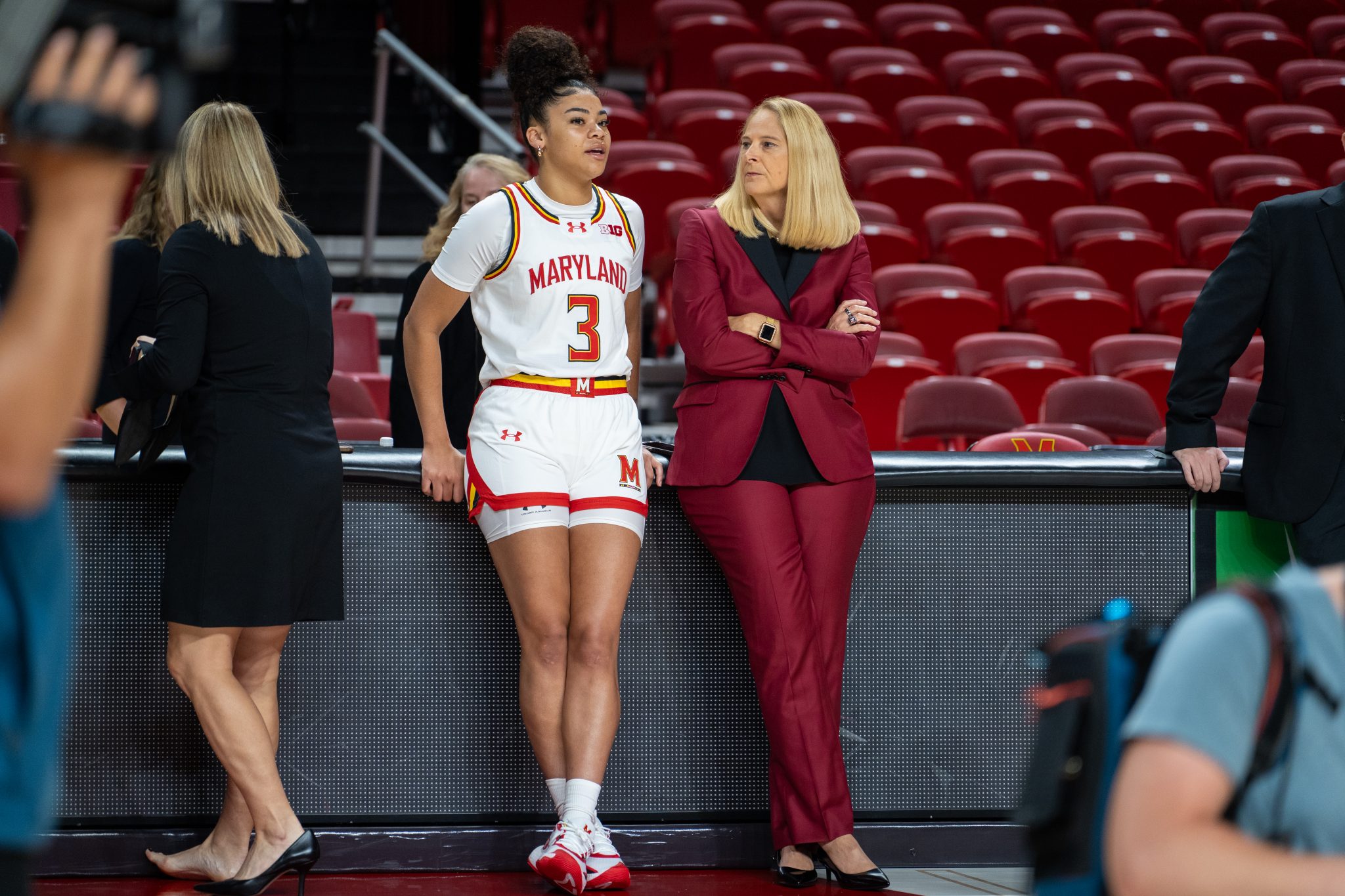A recurring discourse has emerged from the Maryland women’s basketball program in the weeks leading up to its season. Expressions like scoring “by committee” and “anybody can go off” are repeated by players and coaches alike, making it clear the Terps think it’s going to take a wide-scale effort to reach the program’s lofty goals.
That depth presents coach Brenda Frese with a new challenge. Last year, Frese played around seven players, leaning heavily on her starting lineup and barely digging into her bench.
With three players who have scored more than 1,000 points in their careers with Sellers trailing close behind, and young players Bri McDaniel and Riley Nelson poised to play large roles, the way Frese handles her rotations this season is a looming question.
Frese used 164 different lineup combinations at least four minutes last season, according to data provided by Maryland women’s basketball.
The starting lineup of Elisa Pinzan, Shyanne Sellers, Abby Meyers, Diamond Miller and Faith Masonius played 423 minutes, 341 more than the next closest group.
It took Frese six games to settle on that lineup. Lavender Briggs started the first five, before Frese swapped her for Sellers on Nov. 26 vs. Towson.
[Three takeaways from Maryland women’s basketball’s pair of preseason exhibitions]
This season, Maryland has fewer established stars but plenty of options to play significant minutes. Masonius and Sellers will likely start again. Nelson, McDaniel, Briggs, Jakia Brown-Turner and Brinae Alexander will compete for the other three starting spots.
Frese could shuffle lineups early in the season to experiment with different combinations. But that approach could interfere with players looking to establish a rhythm and consistency in the opening weeks of a new season.
“It might be hard to get in a rhythm, but just ensuring that we always have fresh legs, I think, is important too,” Alexander said.
Maryland is also tasked with replacing its two most productive players from last season. Diamond Miller and Abby Meyers had efficiency rating per game scores — a metric the Terps use heavily — of 678 and 527, respectively. Other than Sellers’ rating of 555, the next closest player from last year’s squad was in the 300s, according to data from the team.
In recent exhibition games, Frese opted for a veteran-laden starting lineup of Sellers, Briggs, Brown-Turner, Alexander and Masonius and brought underclassmen Nelson, McDaniel and Emma Chardon to come off the bench.
The four returners — along with Abby Meyers — had Maryland’s highest net rating of any lineup it played last year. The group had an offensive rating of almost 116 and a team best 76.2 defensive rating.
[Maryland needs Shyanne Sellers to be a star — her summer with USA basketball helped]
“I feel like this year, we can definitely play like nine to almost 10 [players],” Alexander said.
Maryland’s youth is different from the veteran-heavy teams the Terps deployed in recent years.
The way players including Summer Bostock and Hawa Doumbouya evolve could change the season’s ceiling. If Doumbouya can play rotation minutes, Maryland could have a different look in the frontcourt, while there’s limited players on the roster with Bostock’s shooting ability.
“It’s good that we have backup players for that now too,” Bostock said. “Everybody can hoop, everyone can contribute in their own way.”
But Frese has been reluctant to play freshmen in the past. Each of the last three freshman classes finished the season with fewer than 500 minutes played. This year’s group could change that.
The veteran coach has never been afraid to experiment with unique lineups. If the Terps want a lineup with better spacing, they could play four guards and Allie Kubek at center. If they want a defensive-focused five, McDaniel and Chardon could slot in.
“We’re gonna put the best five players on the floor so I think that’ll evolve all season,” Frese said.
Frese has historically taken weeks to settle on a consistent lineup. With an abundance of options this season, that precedent likely won’t change in 2023.



